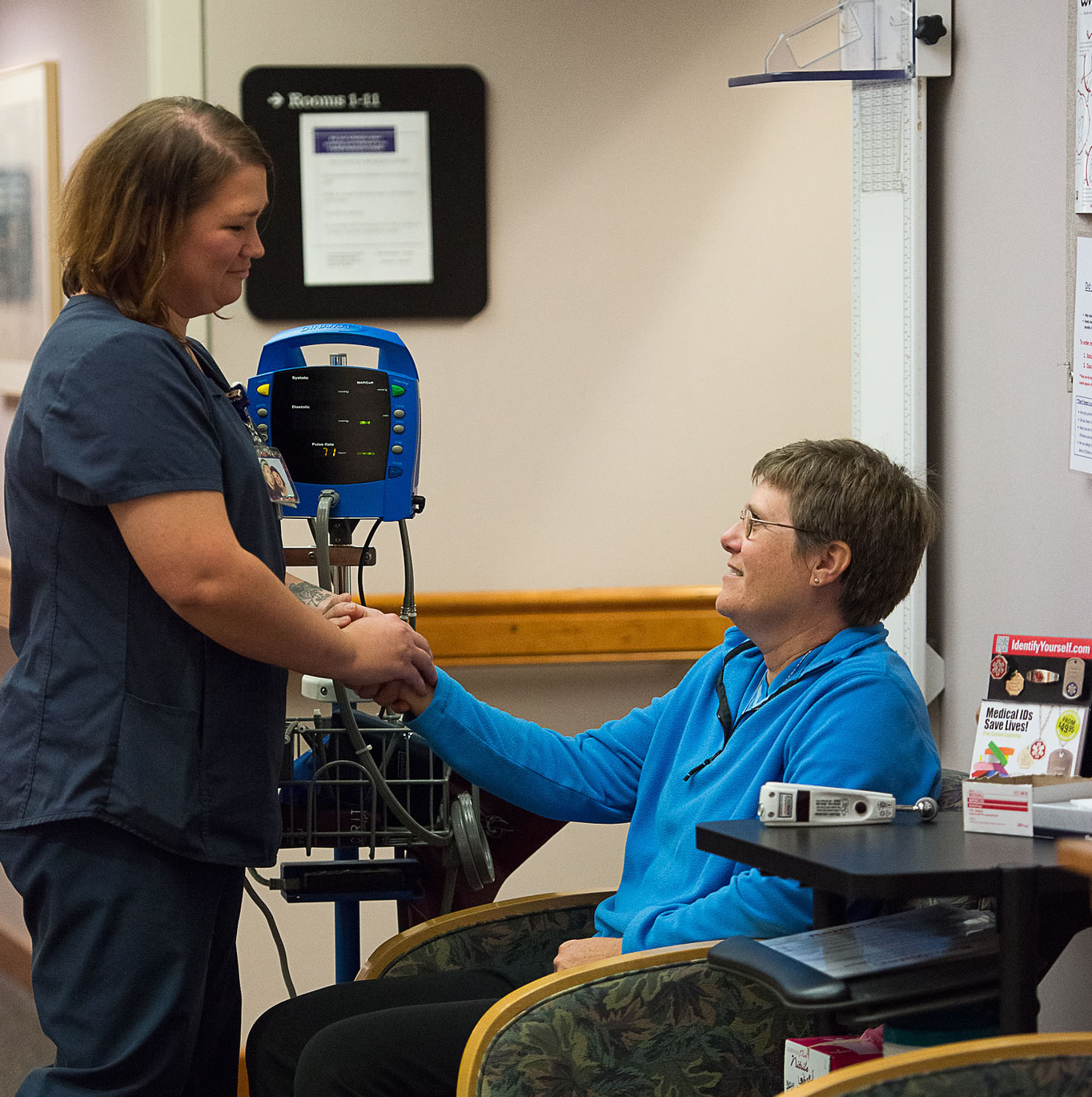Imagining Wellness
Guided imagery engages the senses to cope with cancer

Kris Snow grew up skiing in the mountains of Utah and associates them with fond memories, peace and spirituality. With her entire family still living out West, being diagnosed with stage 3 breast cancers in 2011 after moving to Michigan left her feeling even farther away from the people and place she loved.
"The mountains and nature are really my church," she says. "I feel calm there and can put things in perspective. Being so far away was hard."
During the process of chemotherapy treatment, Snow imagined a fight in her body: the cancer cells were the enemies, her caregivers were the generals and the infusion treatments were the soldiers going in for battle.
"I'm a very visual person," Snow says. "I literally pictured the cancer cells blowing up. Treatment was my time to do battle."
She mentioned the imaginary battle to Jennifer Griggs, M.D., and other members of her care team, who referred her to Claire Casselman and the Guided Imagery Program to learn more ways to use her imagination to cope with stressors associated with her cancer.
- Lower blood pressure
- Decrease stress hormones
- Ease chronic pain
- Enhance sleep
- Reduce side effects
- Boost immune system
- Speed surgical recovery
- Manage pain
- Manage anxiety
- Lessen side effects
* Guided imagery should not replace medication or treatment prescribed by your physician.
"Guided imagery is a way to tap into the power of your imagination and use your senses to release uncomfortable feelings or thoughts and then refocus," says Casselman, a clinical social worker in the Complementary Therapies Program. "With Kris, it made sense to utilize her love of skiing and the mountains as a way to manage stress and regain a sense of control as she faced some bigger life issues related to her diagnosis." Casselman holds one-on-one sessions with her patients to get to know them, ask questions and develop personalized guided imagery resources they can use anywhere.
Snow received a CD, scripted and recorded by Casselman, that included sensory prompts to take her back to Utah and the mountains. She listened to the CD during infusion, after surgery, during radiation and even at night during bouts of insomnia.
"As I was laying there, I would take myself to the top of that mountain," Snow says. "I would think of the sound of skis swishing on snow. I’d remember the shining of the sun and the warmth it provides even though it's winter. I'd picture that physical, good fatigue you get from exercise and being with friends. It works. It calms you down. I never felt anxious about what the treatment was doing to my body."
Snow worked with Casselman to develop two CDs during her treatment and now, in the recovery and rebuilding phase after cancer, thinks she’s ready for a return guided imagery session to create a third.
"During treatment you're facing the physical aspect of things," Snow says. "There's a huge emotional component in healing. The mental part is beyond scary when you don't see the physician for three months. Sometimes reentering regular life is hard."
Casselman says the Guided Imagery Program is beneficial to patients at all points during and after treatment. The key is to engage your senses to corral the power of the imagination to affect the body and mind in a positive way.
Read the Summer, 2013 issue of Thrive.
